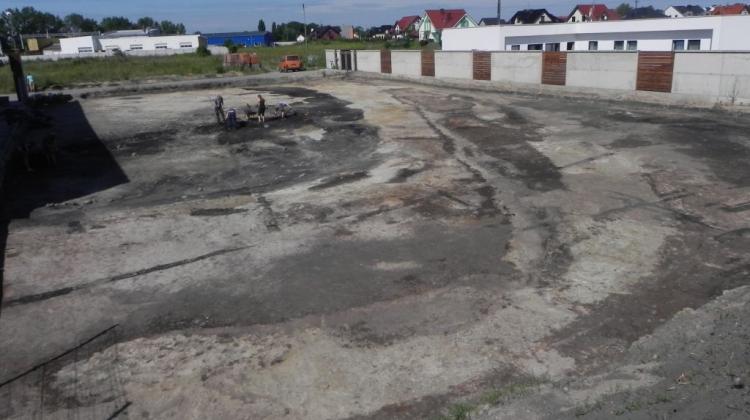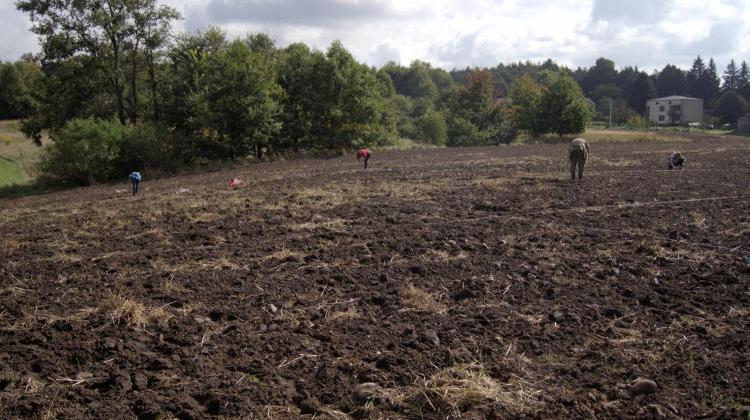Archaeologists are studying early medieval stronghold in Dąbrówka

Archaeologists are studying relics of an over a thousand years old stronghold in Dąbrówka near Poznań. Similar studies have not been carried out in Wielkopolska before - told PAP head of excavations, Paweł Pawlak.
"It is rare to uncover a settlement on such a large scale. The acquired data will allow to broaden our knowledge of the processes associated with the formation of the Piast state" - said Pawlak.
Research of archaeologists shows that the stronghold functioned briefly, from the first half of the 9th to the beginning of the 10th century. Then it burned down and was never rebuilt.
"Responsible for the destruction were the representatives of the state of the first Piasts that was forming at that time" - believes Pawlak. In his opinion, the castle was located too close to Poznań (approx. 15 km to the west), aspiring to the role of the main centre, so the inhabitants of the stronghold in Dąbrówka had to face the challenging Piasts.
During the ongoing excavations, archaeologists uncovered large fragments of wood and earthen embankments. Their foundations consisted of large boxes made of wood, which the builders filled with sand, wood mixed with sand, or sand with clay. Wood was not preserved in the form of beams or battens, but, as the researcher called it, "wood streaks", which was caused by the destructive weather conditions - air access to the medieval remains.
The researchers also identified a section of the moat surrounding the settlement and an entrance - it was not, however, a fortified gate, but a 2.5-meter hole in the wall. Pawlak noted that this was a spectacular find, and at the same important for the analysis of the role and direction of the route leading to the stronghold.
In the coming days, archaeologists will focus on the interior of the castle - the maidan. They have already identified places in which large quantities of processed bones and antlers are found, which indicates that they were craft workshops. They are counting on the discovery of relics of wooden huts, to get an insight into the daily life of inhabitants.
The excavations are conducted by Henryk Klunder\'s Laboratory of Archaeology and Conservation. The study covers an area of over 1,500 sq. m, which is connected with the fact that it is a rescue excavation project - an industrial hall will be built in this place in the future.
The stronghold caught the attentions of researchers already in the nineteenth century. Its function was determined correctly. However, after the initial excavations in the 1970s researchers concluded that it was a settlement. In 2010 Prof. Włodzimierz Rączkowski of the Institute of Prehistory, Adam Mickiewicz University in Poznań took photos of the site from an aircraft. It became clear that from the bird\'s eye view the relics looked like the remains of a castle, which was eventually confirmed during the ongoing excavations.
Archaeologists found similar traces of devastation from the same period during recent research in Grodziszcze in the Lubusz province. In that case, the burnt down stronghold was rebuilt during the reign of the Piast monarchy.
PAP - Science and Scholarship in Poland, Szymon Zdziebłowski
szz/ mrt/
tr. RL
Przed dodaniem komentarza prosimy o zapoznanie z Regulaminem forum serwisu Nauka w Polsce.
















